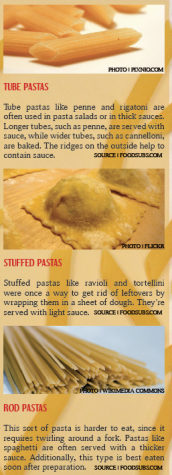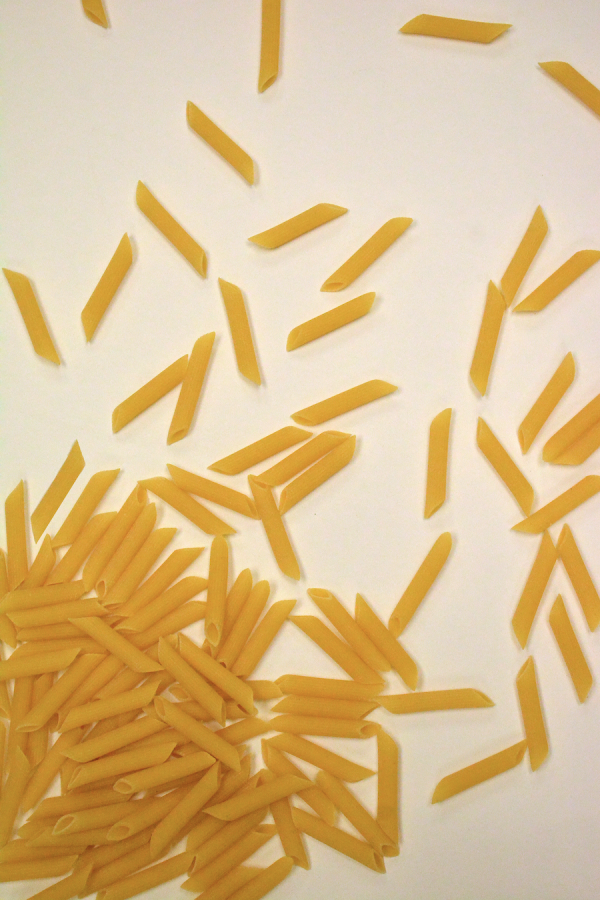Penne for your thoughts
November 21, 2018
Many can just name a handful, like “penne,” “spaghetti” and “linguine.” But the world of pasta is far more intricate. The various shapes, in addition to being elaborate, each holding a hidden geometry.
“Pasta,” the Italian word for paste, is a dish that has been around for over two millennia. According to the International Pasta Organization, the first type of pasta, made of barley flour, was adopted by the Greeks from the natives of Naples. Later, the Roman emperor Cicero described his affection for “Laganum” and “laganas” (the precursor to modern-day lasagna).
The two principal types of pasta are “pasta fresca” (fresh pasta) and “pasta secca” (dried pasta). According to Edward Garrubbo, a chef and member of the Accademia Italiana della Cucina, Italian law requires all “pasta fresca” to be made with a certain percentage of acidity and humidity. Often, these types of pasta are given a twist by adding spinach, tomato paste or squid ink. According to Pasta Fits, pasta has numerous health benefits, such as a low glycemic index and high folic acid levels.
“Pasta secca,” on the other hand, goes through a certain process for production. Pasta is pushed through a die-plate (a plate with holes in it) and cut. To qualify as Italian pasta, according to Garrubbo, the pasta must be dried for 50 hours in a copper container and in open air. Non-Italian pasta is made much more quickly, with the pasta being dried in a hot steel container.
The different names of pasta all have their own meanings, while their suffixes describe their size. For example, “capellini” (angel hair) is a combination of “capelli” (hair) and “-ini” (small). On the other hand, “rigatoni” (a larger tubular pasta) is a combination of “rigato” (ridged) and “-oni” (large). There are other suffixes, according to Italy Magazine, such as “-otti” (largish) and “-occi” (poorly made).
Other forms of pasta, like “tortellini,” “ravioli” and “manicotti,” are stuffed with meat and cheese and covered in sauce. “Ravioli,” a more well-known dish, comes from the word “riavvolgere” (to wrap). According to the restaurant Cucina Toscana, “ravioli” is made by spreading dough, placing the contents inside and wrapping it. However, this can be difficult as the dough can dry out rapidly.
Today, there are an estimated 350 different types of pasta, according to Italy Magazine. These range in shapes and sizes, but they were all designed to hold the most sauce possible. According to Garrubbo, the rule to follow for pasta is to pair thicker pasta with thicker sauce (e.g. rigatoni with marinara), compared to light pasta with light sauce (e.g. capellini with olive oil).
Countries across the world have pasta as part of their food culture, from Spain to Greece to Uruguay. At MVHS, out of a survey of 378 students, 355 said that they liked pasta. Out of 373 students, 153 preferred long pasta, such as “spaghetti,” “linguine” or “capellini.”
For the past centuries, pasta has spread from China and Greece to all over the world. Different cultures add their own twists, an aspect that makes this staple so widespread. After all, a healthy food that can be modified in so many ways doesn’t occur too often.



















